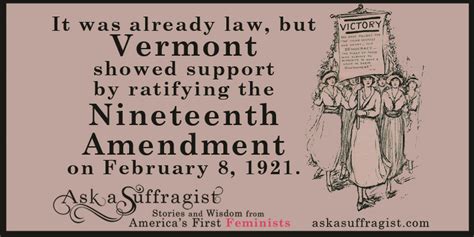
February 8, 2021, marks the 100th anniversary of Vermont’s ratification of the 19th Amendment granting women the right to vote.
Contrary to its history of progressive change, Vermont lagged behind the nation on women’s suffrage. Legislators resisted the reform for decades before 1920, when a groundswell of women faced off against Governor Percival Clement, a perennial opponent of suffrage and prohibition. Legislators finally passed presidential suffrage in the 1919 session, but Clement vetoed the bill, and they failed to override his action.
After Congress and 35 states approved the amendment, Vermont suffragists organized a massive campaign of letters and petitions urging Clement to call a special session of the legislature to make Vermont the “Perfect 36,” the last state required for ratification. Upon Clement’s refusal, Lillian Olzendam and Ann Batchelder of Woodstock, orchestrated the largest non-violent protest on April 21, 1920, when 400 women paraded silently through Montpelier and converged on the State House to demand equal justice.
Clement’s stance notwithstanding, women’s suffrage became a reality on August 26, 1920, after Tennessee became the “Perfect 36.” By November, over 28,000 Vermont women had registered to vote, helping elect a pro-suffrage governor and Vermont’s first woman legislator, Edna Louise Beard of Orange. She helped approve both the 19th Amendment and an adjustment to the Vermont Constitution that replaced “man” with “person” in the requirement for the Freeman’s Oath.
Since then, women’s legislative representation has grown steadily over the last hundred years, outpacing national trends. Today it is approximately 42.2%, but Vermont is the only state that has not sent a woman to Congress.
A message from the Vermont Suffrage Centennial Alliance. Please contact Sue Racanelli, lwvofvt@gmail.com or 802.225.6032.
